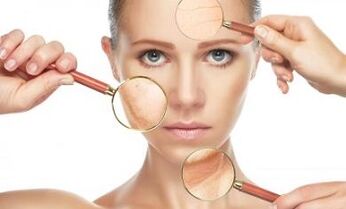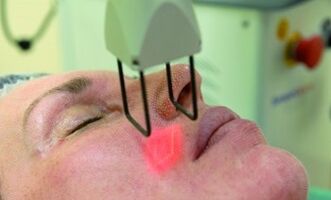
The external manifestations of skin aging are the appearance of wrinkles, enlarged pores and loss of skin freshness. The aging process is almost non-existent in the initial stage and therefore does not attract much attention, but already at the age of 25 the first signs of initial wilting appear: the turgor decreases, the texture changes. Later, the skin gradually thins - the blood vessels become noticeable, areas of hyperpigmentation appear.
To restore the youthfulness of the skin, it is not enough to eliminate only the visible manifestations of aging - the active activity of cells, the natural mechanism of their renewal and growth, must be restored. Thus, the skin not only lends a fresh look, but truly becomes younger. Cosmetology made a real breakthrough in 2004 when the method of fractional photothermolysis was introduced to treat age-related skin lesions. This technology is proven and clinically tested - proven to be effective in anti-wrinkle and skin rejuvenation.
Practical application has also shown that fractional photothermolysis is easily tolerated, safe and high in the elimination of cosmetic defects and the return of youth. Today, it is one of the most reliable and promising methods for skin rejuvenation and firming, which is recognized as the "gold standard" in solving cosmetic problems. It is also a modern and safe alternative to surgical skin lifting.
The course of the procedure, the patient's feelings

One of the organic and pleasing benefits of fractional photothermolysis is its painlessness - only the use of surface anesthesia is required, while the sensations are limited to mild tingling in the laser-treated area.
The anesthetic is applied before the start of the session, which lasts for one hour - the time varies depending on the size of the surface to be treated.
Immediately after completing the procedure, the specialist advises the patient, applies a cream to the skin and gives detailed instructions for its care.
It should be noted that no additional special medical care is required and you can go home alone.
Recovery period
If the surgery previously required a long recovery period, the fractional laser rejuvenation method does not take much time: it takes up to a week to return to a normal rhythm of life: the timing depends on the method of intervention (ablative, not ablative). In the first two days after the procedure, the skin may swell slightly. Redness is observed during the day, 4-7. And during the day, dead cells begin to peel, releasing healthy and beautiful skin for breathing and development.
You can be sure that the fractional photothermolysis process has made your skin younger very quickly - after the ablative exposure method, the skin tightens almost immediately and usually after a week the wrinkles smooth out, the face evens out, the skin texture improves, the oval of the face becomes clearerbecomes. In order to consolidate and maximize the result, several procedures are needed - these are performed with an interval of about a month.
Fractional laser rejuvenation lasts for up to six months after all procedures are completed, and the effect lasts for several years. In many ways, the outcome is determined by the patient’s lifestyle - following a doctor-prescribed program to maintain the youthfulness of the skin helps to noticeably slow down its aging process.
Combination with other rejuvenation methods
Many patients, seeking to increase the effect of rejuvenation, want to combine fractional laser rejuvenation with the use of botulinum toxin injections and fillers. In this case, there are no contraindications - special studies have confirmed the safety of the effect of the fractionated laser on collagen and hyaluronic fillers. For those who want to perform both the laser rejuvenation procedure and the Botox injection on the same day, there are also no restrictions, but in order to maximize the rejuvenating effect, it is recommended to complete the fractional laser rejuvenation process first. . It is likely that the effect achieved will not require further efforts to restore the beauty and youthfulness of the skin.
Contraindications to the procedure
Fractional laser rejuvenation should not be performed if there are general therapeutic contraindications:
- Benign and malignant tumors in the treatment area.
- Oncological diseases, radiation and chemotherapy.
- Dermatoses in the field of the procedure, photodermatoses.
- Family history of vitiligo.
- Herpes infection in the last month.
- History of keloid scars.
- Acute infectious diseases or impaired immunity.
- Chronic diseases (diabetes mellitus, systemic connective tissue diseases, coagulation disorders, thromboembolic diseases. )
- Fresh tan or tan in the last month.
- Use of oral retinoids in the last 6 months or use of topical dermatological agents with retinoids in the last 2 weeks.
- Pregnancy, breast-feeding.
- Mental illness.
If there is a contraindication to the procedure, you must temporarily abstain to ensure health safety, the same fractional laser rejuvenation is completely safe.















































































